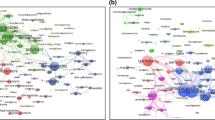Abstract
Solid state purification generally requires efficient diffusion mechanisms in order to allow impurity migration towards the sample surface, from which it can be removed by a suitable mean. Since solid state diffusion just becomes efficient near the melting point, generally high working temperatures are required, resulting in expensive, energy consuming processes. The addition of small amounts of a common liquid solvent of both matrix and impurity results, even at low temperatures, in effective diffusion mechanisms the thermodynamical aspects of which are discussed in this work. Thermal cycling enhances the efficiency of the described process. Its concerns industrial and analytical applications.
Similar content being viewed by others
References
W. J. Beek and K. M. K. Muttzall, Transport Phenomena, John Wiley and Sons Ltd, London 1975, p. 226–242.
F. A. Matsen and J. Y. Beach, J. Am. Chem. Soc., 63 (1941) 3470.
W. T. Barrett and W. E. Wallace, J. Am. Chem. Soc., 76 (1954) 366.
B. C. Nguyen, Bull. Soc. Franç. Minér. Crist., (1966) 229.
Author information
Authors and Affiliations
Rights and permissions
About this article
Cite this article
Diyani, S., Walter, S. & Hadj Mebarek, A. Water assisted thermal segregation. Journal of Thermal Analysis 49, 1289–1296 (1997). https://doi.org/10.1007/BF01983686
Issue Date:
DOI: https://doi.org/10.1007/BF01983686




